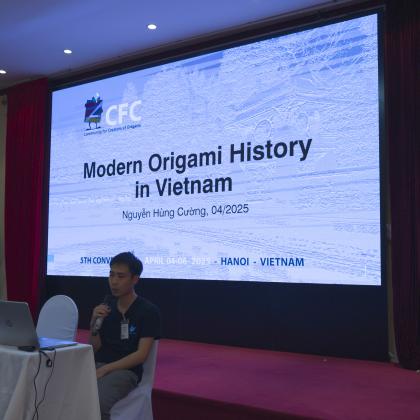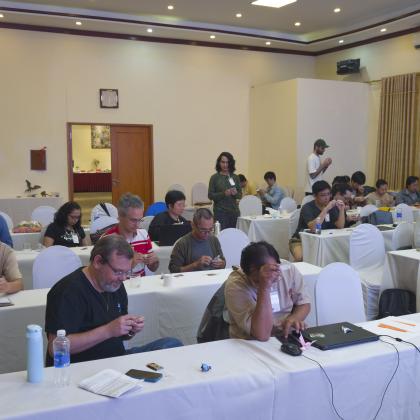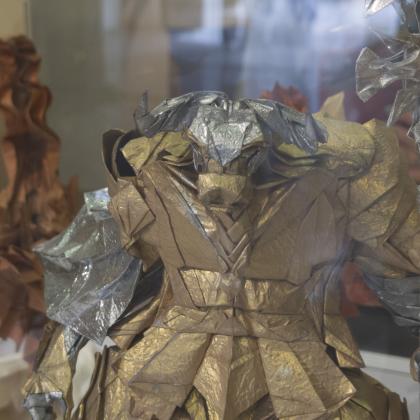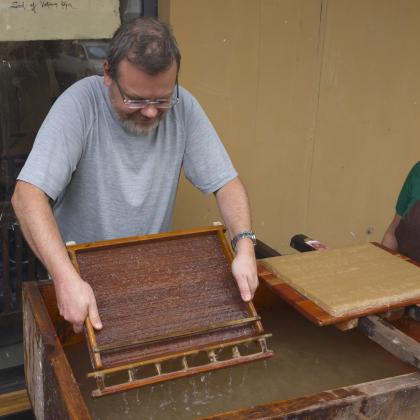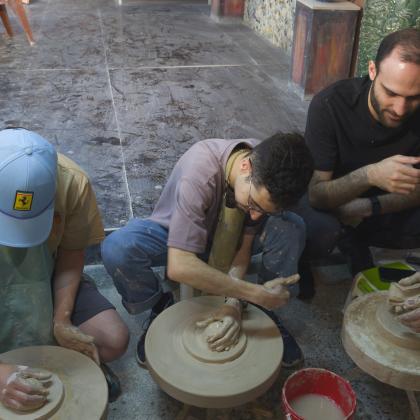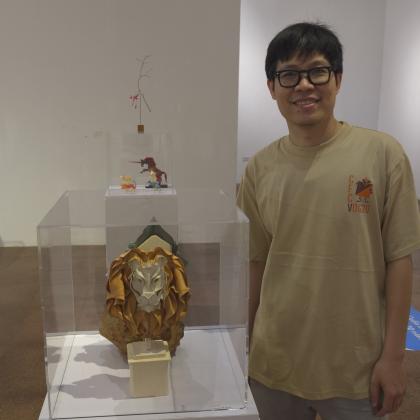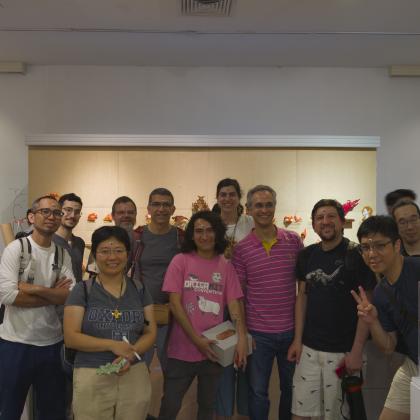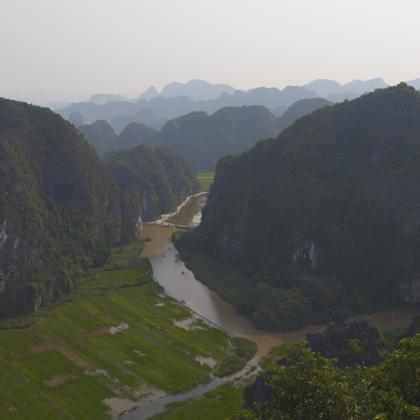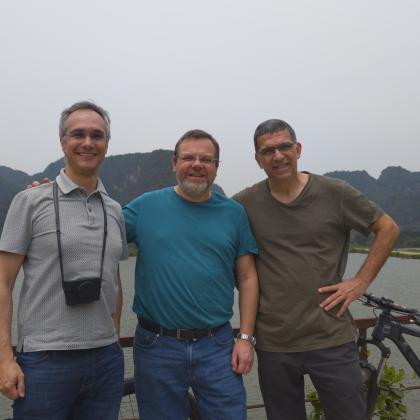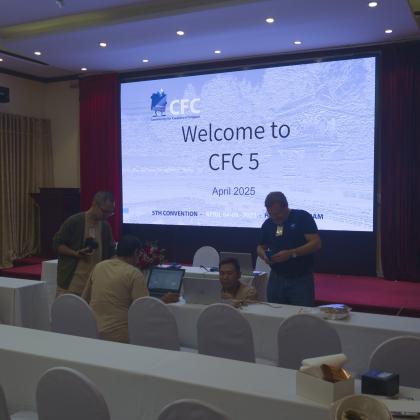CFC5 Hanoi
CFC5 Hanoi
The Convention
The Fifth Convention for Creators occurred in Hanoi, Vietnam, in April 2024. It was back-to-back with the VOG 20th Anniversary.
With 36 participants, CFC5 included 12 talks, 6 panels, and a hands-on workshop. All dealt with the many faces of paper-folding, like papers, design techniques, the CFC as a community, the CFC site, and many other issues.
You can find here all the presentations, and soon we will also upload the recordings of the sessions.
Image Gallery
CFC5 Talks and Presentations
01 Materials for Folding - Discussion by Nguyen Tu Tuan
Introduction to the many materials for folding. Display types of materials. Models are folded from each material. Discuss and share experiences on each material.
02 Orchid Glue for Japanese Paper Folding, by Cekouat León
In representational origami, it is common to treat (size) tissue or handmade papers with a substance that enhances their ability to hold creases and maintain a given shape, such as methylcellulose (MC) or polyvinyl acetate (PVA). In this short talk, I'll present my experiments using the sap extracted from orchids to size papers and shape origami models.
04 What Kind of Art is Origami, by Tung Ken Lam
Is origami ‘Art’?
Or, how is origami ‘art’?
I present some ideas following on from Lee Armstrong’s CfC4 talk ‘Why your origami is NOT ART - and why it IS’.
How important is the process, and how important are the results? How does reproducibility affect origami as ‘Art’?
05 Using Parametric CAD for Origami Design, by Brian Chan
I present an alternative method of uniaxial origami design that uses parametric CAD software (in my case, Onshape). These types of software are usually used for product design, but they have more than enough capability to solve origami crease patterns. I will show you how.
06 The Borders of Origami, by Ilan Garibi and Roman Diaz
What are the borders of Origami? Which paper craft can be considered origami, and which isn't?
07 Origami in Industrial Design, by Ynon Toledant and Ilan Garibi
What are the uses of folds in industrial desing and what modern tools can help us do that?
08 Between Precision and Freedom: How to Balance Faithfulness to Diagrams and Personal Creativity? by Nicolas Terry
Origami exists at the crossroads of technical precision and artistic expression: should we strictly follow a diagram or interpret it freely? This talk explores the tensions between these two approaches and challenges the way we design and share diagrams.
09 OriCAD, by Dong Viet Thien
Introducing a plugin for AutoCAD that will make your diagrams for you. Yes, it is working, come and see!
10 Origami Diagram Standards, a panel
What is your favorite software? How thick are your valley lines and other objects? Could we share tips to make diagrams better and faster... or do we even need diagrams these days, when more and more people learn from video?
11 The Art in Origami: Beyond Intellectual Debates, by Nicolas Terry
Rather than endless debates, discover concrete keys to recognizing what truly makes an origami piece a work of art.
12 The Business of Origami, by Tung Ken Lam
Many dream of making a living from origami, but what are the options, and how feasible are they?
Plus, some ideas for devising strategies for competitive advantage.
13 Modern Origami History in Vietnam, by Nguyen Hung Cuong
Everything I have researched about how origami grows in Vietnam (mostly from 197x till now.)
14 CNC Cutter - Hints and Tips Before You Start (focusing on Cameo), by Winnie Leung
Sharing my (sometimes expensive and painful) learnings of using a cutting machine
15 International Projects We Need to Do , by Ilan Garibi
Is there an international community? How big is it? And which project should we make to strengthen this community?
16 Pursuing an Origami Career from a Developing Country, by Cekouat León
Developing countries are defined as having a "relatively low standard of living and an undeveloped industrial base" compared to developed countries. In this talk, I'll address the limitations and areas of opportunity related to making origami professionally in such countries, with pieces of advice from my personal experience.
17 Wet Folding For Experts, by Nguyen Tu Tuan
Introducing the wet folding. How to choose paper. Wet folding technique. The benefit of wet folding. Instructions for wet folding the owl.
18 The Secrets of Designing Tessellations, by Ilan Garibi
I present how I design tessellations, the basic properties of a tessellatable fold, and how easy it is to find variations with some simple tools.
19 Origami Tools for the Visually Impaired, by Ynon Toledano
A multi-tool I developed for origami instruction for the visually impaired people. I will talk about the working methodology, the production method, and the vision.
20 What is CFC, and Origami Copyright Panel
This is a chance to give people a basic understanding of copyright law, and more than that, what is the right thing to do? If the law can not protect us, what can we do?

